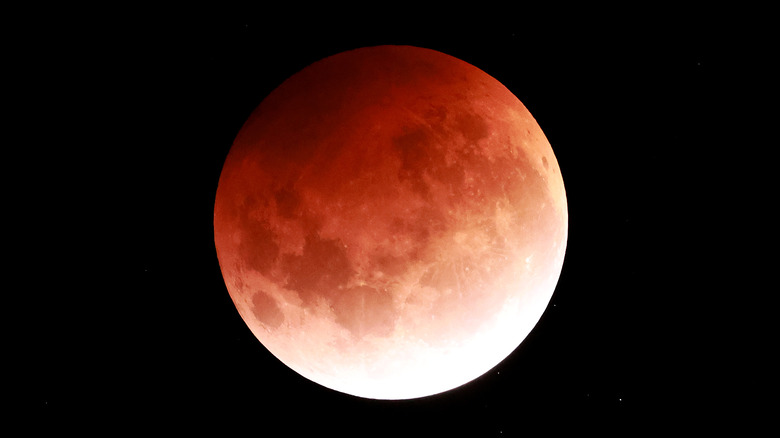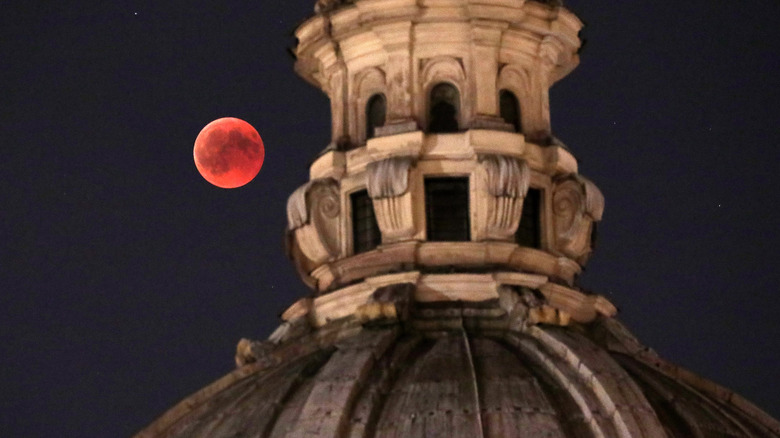What Is A Lunar Eclipse?
Late tonight (or, really, early Friday morning), more than 99.1 percent of the moon will be eclipsed, giving the moon a spooky red cast, according to NPR. But what even is a lunar eclipse? Is it the same thing as a blood moon? Is it just a solar eclipse at night?
Though eclipses might seem like a rare event, they actually happen about four to seven times a year (via NASA). From space, eclipses look like the sun, the earth, and the moon line up in a single-file formation. This only happens occasionally, rather than every month, because the moon's orbit around the earth and the earth's orbit around the sun are on different planes.
During a solar eclipse, the moon moves between the earth and the sun, blocking off the sun partially from view. During a lunar eclipse, it's the earth that moves between the moon and the sun, casting the moon in shadow. Or, in other words, a lunar eclipse on earth is a solar eclipse on the moon (via Rice Space Institute)!
Full moons and blood moons
The celestial bodies need to be in these precise places in their orbits for eclipses to occur. Because of this, lunar eclipses only happen when the moon is full, and solar eclipses only happen when the moon is new (via NASA). So don't let headlines tell you that a full moon eclipse is a rare event — the full moon is a necessary condition of the lunar eclipse.
In a total lunar eclipse, that full moon is completely within earth's inner shadow, or umbra. The moon will still be visible, but cast in an odd, reddish shadow. This is because colors with longer wavelengths, like red and orange, have an easier time getting through the earth's atmosphere than colors with shorter wavelengths, like indigo and violet. The more dust, clouds, and pollution in the earth's atmosphere, the redder the moon will look during a lunar eclipse — the particles cause the shorter wavelengths to scatter. This is also why sunsets look more vivid during wildfires, according to the National Center for Atmospheric Research.
In a partial lunar eclipse, this shadow only covers part of the moon — you might mistake it for the moon waxing or waning. And in a penumbral eclipse, in which the moon is shadowed by the earth's outer shadow, or penumbra, only the edges of the moon will dim.

